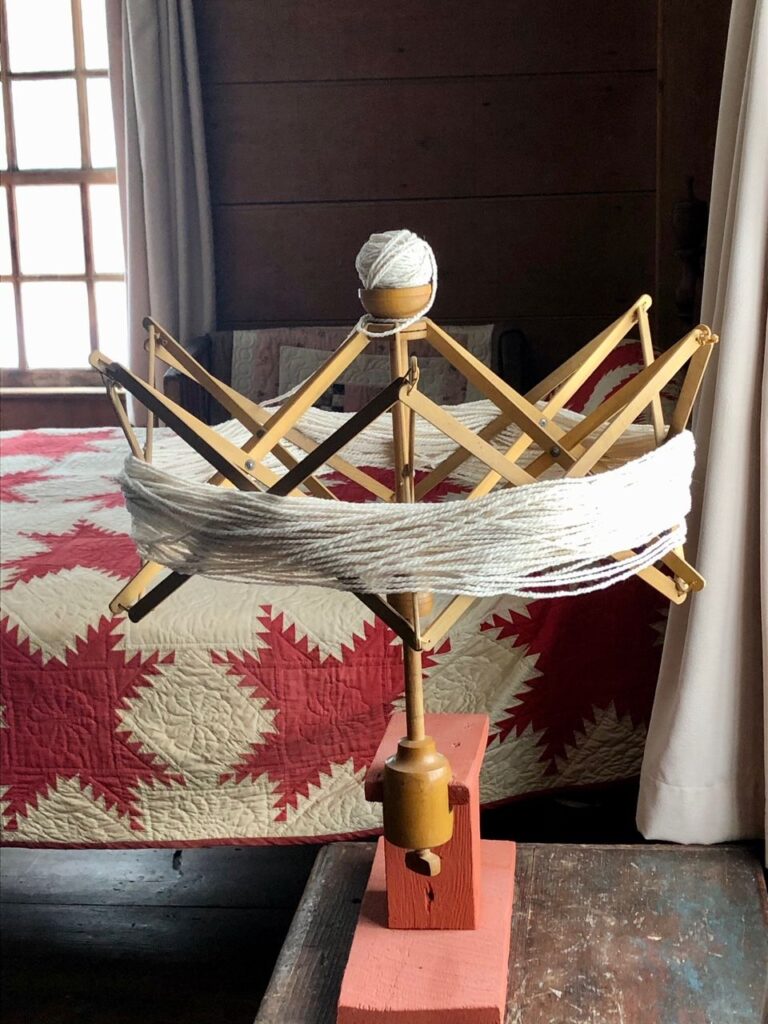We are bringing back our object of the month series and for February, we thought we would begin with our Shaker Swift, currently on display in the 2nd floor Children’s bedroom.
Shaker objects are an important part of our collection at the Bidwell House Museum. However, Adonijah Bidwell himself may or may not have been acquainted with the Shakers: at the time of his death in 1784, coincidentally the same year as the death of Shaker founder Mother Anne Lee, only the Watervliet Shaker Village had been established. His sons and daughters were likely familiar with the Tyringham Shaker Village (active 1792-1875), located a few miles away on Jerusalem Road in Tyringham, along with the other local Shaker communities that were founded in the late 18th and early 19th century, including Hancock, Mount Lebanon, and Enfield (CT). The Shaker objects collected by Hargis and Brush during their time as the residents of the house range from boxes from Harvard to tables from Canterbury, though the piece we’re looking at here is a little closer to home: a swift from Mount Lebanon.

Shaker history is filled with a rich history of invention and manufacture, with goods marketed and sold to people from “the World,” or non-Shakers. One such object was the swift, which improved efficiency in textile work: instead of relying on an additional person to hold the skein of yarn while another rolled it into a ball in preparation for knitting or crocheting, an individual person could instead place the skein around the adjustable slats of the swift and roll a ball of yarn themselves. A thumbscrew at the base clamps the swift securely to the edge of a table. When not in use, the slats collapse for easy storage. This particular piece was most likely constructed between 1850 and 1880, and Adonijah’s granddaughters might have used something similar, if not identical, when preparing yarn to knit garments to keep their families warm in the winter.